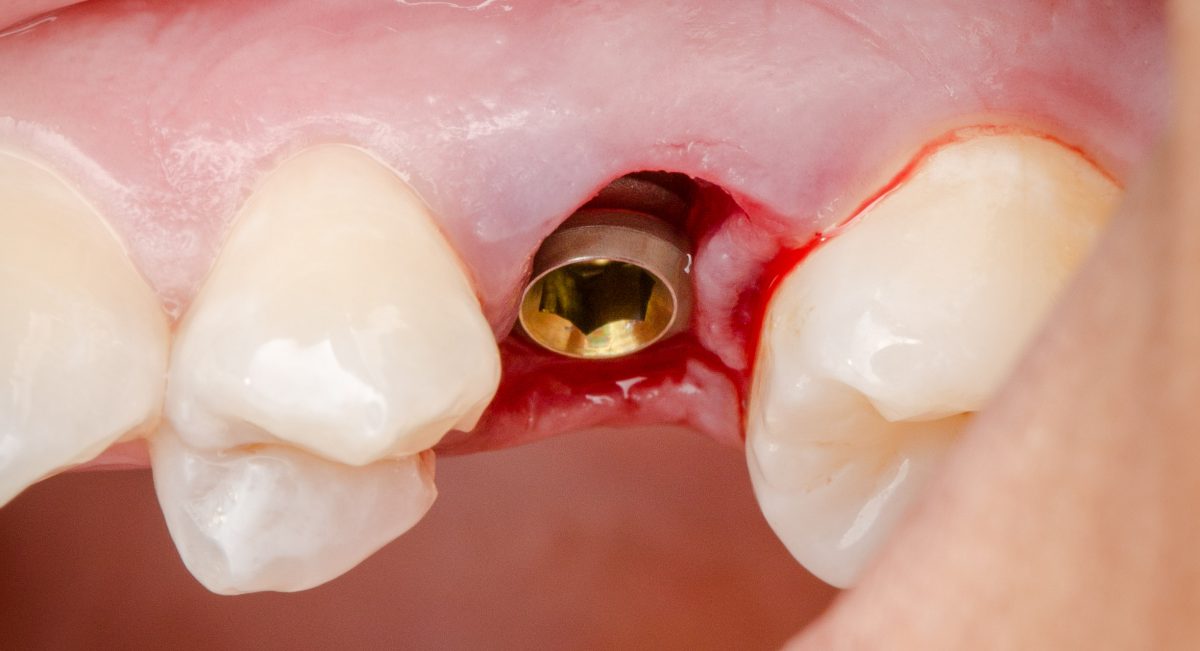What is a Dental Implant? How does the process work?
Simply put, a dental implant is a replacement for a tooth root.

In a bit more detail, a dental implant is a piece of titanium or zirconia, usually shaped like a screw, that is surgically implanted into your jaw bone. Due to the miracle of osseointegration, your bone grows into and onto the implant surface, essentially making it a part of your bone. That process takes around 3-4 months. After the implant integrates and becomes ‘stable’, your dentist will be ready to restore it. The implant essentially is a screw within a screw, giving your dentist the ability to attach prosthetics to your jawbone, and replace the root portion of missing teeth.
How does the surgical process work?
There are two main options for dental implant surgery: Immediate placement vs delayed placement, and single stage vs two stage surgery.
Immediate placement involves taking out a tooth/teeth and putting in the implant at the same time. Your dentist will evaluate the quality and quantity of your bone, as well as your overall health to determine if this may be an option for you. While placing the implant immediately can save time (between 3-6 months), it is a bit more risky and less predictable. Your dentist may want to extract the tooth and place a bone graft, or even grow more bone using Guided Bone Regeneration (see the page on bone grafting for more info on that process) prior to placing the implant so that a larger and stronger implant may be used. If you are already missing the tooth, you will undergo what we call a delayed placement – however the bone quality and quantity must still be evaluate prior to surgery. Most dentists will take a 3D X-ray, or CBCT to measure these factors. For more about the 3D and planning process, see my post on 3D implant treatment planning.

Single stage implant surgery vs two stage is also a simple concept. During a single stage surgery, the implant (or screw) is placed into the jawbone through the gums, and then what is called a healing abutment is placed on top of that. Those can either be pre-made metal cylinders (usually for back teeth) or custom made prosthetics (usually for front teeth) that allow the gums to heal around them. The point of the healing abutment is to allow for optimal gum healing, and gums will heal around it. They can be used to train the gums to form a shape like the tooth the implant is replacing. Two stage surgery is simply delaying that process, the implant is placed and allowed to integrate and the gums heal over the top of it (a cover screw is placed over it to allow this to happen easily). Then, the implant is uncovered and a healing abutment is placed once the implant is determined to be stable. The rational behind this staging is all about predictability. Implants need to remain stable and not move during the healing and integration period, so if your dentist or surgeon is not able to achieve excellent stability, he or she may opt to allow the implant to heal under the gums and reduce the risk of it being ‘bumped’ or loaded prematurely. Additionally, if grafting is needed at the time of surgery, a cover screw may be used to allow the bone graft to heal under the gum tissue. This decision is typically made during the surgery, but you can discuss this process with your dentist prior to beginning the implant process.
What does “immediate load” mean? Why is there a delay before I can use my implant?
One final option for implants is the option to immediately load them – which simply means that rather than waiting 3-4 months to put the implants ‘in function’ – the are used to mount a tooth/teeth/prosthetic at the time of placement, the initial surgery. This is a common practice for ‘full arch’ implant treatment, meaning all of the teeth on a particular arch are replaced by an implant supported prosthetic, and works because multiple implants are braced together for this type of procedure. Typical options for this include “hybrid dentures” or “All-on-4″/”All-on-X” treatment options. This is sometimes possible for single teeth implants – we can sometimes place a temporary crown at the time of surgery. However, when that is done the implant has to be very stable at time of placement, and your bite has to allow the temporary crown to be completely out of function and not participate in your bite. This can be a complicated process, and does increase the risk of implant failure during integration. If this is a process you are interested in, begin that talk with your dentist during the initial consultation so that option can be planned for and evaluated prior to surgery.


